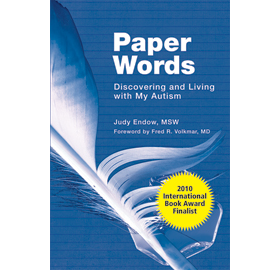I remember with fondness my institutional social worker and some of my favorite aides who began group therapy sessions with a handful of girls on my ward. The topic was often the same – FEELINGS.
I understood feelings intellectually, knowing their labels and their definitions. I also began to realize that the way I perceived the world – through the movements and sounds of colors –
though real as real
could be
to me
was not
a reality shared
by others
and thus …
I came to understand that if I wanted one day to be discharged from this institution, it behooved me to NOT share my color realities with others. So, I didn’t.
Instead, I focused on learning all I could about feelings so that I might figure out how to match this information to my perceived experiences with my beloved colors. And yes, colors were my “beloved” because through the movements and sounds of colors I was able to make my way in the world outside of my skin. Because of my perceptions of the ways of the colors all around me and the colors generated from the interactions between people, I began to pay more attention – and thus came to a better and better understanding of the world-people world all around me. Thus, as a teen I was able to begin to very literally sort out and apply the feeling labels I carried around in my pocket to the colors of my then-current life experiences.
Today I write this because I want people to understand that actual barometer development happened in a very literal and concrete way for me. I also would like it if people could start to imagine a world perceived by the movement and sounds of colors rather than a world whose meaning is primarily obtained by the sound of words being articulated.
And while you are imagining, please entertain the notion that a person who has an internally wired neurology to enable this, though a bit different from most, may not be any less intelligent, or indeed any less of a human being, than the typically wired folks, who are clearly in “The Majority” in the world-people world.
It may not be any better or any worse …
It is just different.
(But, for real, does “different” and “minority” need to be equated with “less than”?)
And still, at this point in the story, I had not yet become acquainted with autism. Indeed, my “communicative” brand of autism had not yet become widely known in the world outside my skin.
But just because others didn’t yet know about IT
and therefore I could not be told about IT
or have any way to become acquainted with IT,
I nevertheless kept right on discovering this IT
that would one day come to be called my AUTISM
So, once again,
come along
with me
on my journey
of discovery…
of my own private
world that resides
in that inside space
of the place on
the side of
my skin that’s located on
the inside
side of me
this private world
of mine
that would
one day
come to be called
my autism …
Excerpt from Paper Words: Discovering and Living with My Autism, pp. 43-44
Note: All my thoughts are in pictures. Words are a translation of the pictures I use when thinking. The spaces between letters and words represent how long it takes for the pictures to fluidly move in such a manner as to connect smoothly with the next thought.
BOOKS BY JUDY ENDOW
Endow, J. (2019). Autistically Thriving: Reading Comprehension, Conversational Engagement, and Living a Self-Determined Life Based on Autistic Neurology. Lancaster, PA: Judy Endow.
Endow, J. (2012). Learning the Hidden Curriculum: The Odyssey of One Autistic Adult. Shawnee Mission, KS: AAPC Publishing.
Endow, J. (2006). Making Lemonade: Hints for Autism’s Helpers. Cambridge, WI: CBR Press.
Endow, J. (2013). Painted Words: Aspects of Autism Translated. Cambridge, WI: CBR Press.
Endow, J. (2009). Paper Words: Discovering and Living With My Autism. Shawnee Mission, KS: AAPC Publishing.
Endow, J. (2009). Outsmarting Explosive Behavior: A Visual System of Support and Intervention for Individuals With Autism Spectrum Disorders. Shawnee Mission, KS: AAPC Publishing.
Endow, J. (2010). Practical Solutions for Stabilizing Students With Classic Autism to Be Ready to Learn: Getting to Go. Shawnee Mission, KS: AAPC Publishing.
Myles, B. S., Endow, J., & Mayfield, M. (2013). The Hidden Curriculum of Getting and Keeping a Job: Navigating the Social Landscape of Employment. Shawnee Mission, KS: AAPC Publishing.
